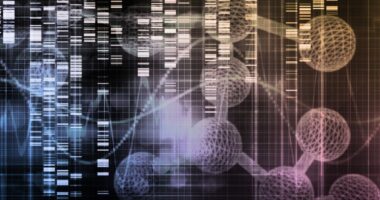New initiative aims to advance patient-derived ALS cell models
Consortium of nonprofits wants models to reflect disease’s complexity

A consortium of amyotrophic lateral sclerosis (ALS) nonprofits and industry stakeholders has launched Project Mosaic, an initiative that aims to advance next-generation, patient-derived cell models that more accurately represent ALS’ complex and diverse nature.
By moving these ALS models from academic labs to industry, Project Mosaic aims to address a significant barrier in ALS treatment development: the lack of standard disease models that represent most ALS patients, whose disease has no known genetic cause.
“By leveraging cutting-edge techniques and collaborating with top scientists and industry leaders, we aim to create more accurate models that can lead to the discovery of targeted therapies for different ALS subgroups,” Bernie Zipprich, Project Mosaic’s program director and an ALS patient himself, said in a consortium press release.
“This initiative has the potential to transform the way we approach ALS drug development and significantly improve patient outcomes,” added Zipprich, who is also a member of The ALS Association’s board of trustees. Project Mosaic is also supported by Project ALS, Answer ALS, Target ALS, Everything ALS, and the ALS Hope Foundation.
ALS, marked by the progressive loss of the nerve cells that control voluntary movements, is a complex disease with a highly variable biology. While mutations in several genes, including C9ORF72 and SOD1, are linked to a higher risk of ALS, other factors also contribute to the disease development. About 90% of ALS cases have no clear genetic cause, in which case the disease is called sporadic ALS.
Current models don’t reflect most patients
Researchers use animal and cell-based models to study the disease in a controlled environment to test new potential treatments. However, most of these models are based on forms of ALS caused by mutations in disease-associated genes.
This means that preclinical models do not accurately represent the majority of ALS patients, who have sporadic forms. This limitation has led to high failure rates in drug development and a lack of effective therapies for ALS patients, the release stated.
Project Mosaic’s approach aims to address these challenges by focusing on two next-generation methods of developing ALS models based on cells derived from sporadic ALS patients.
In these models, cells collected from ALS patients are reprogrammed into induced pluripotent stem cells, or iPSCs, which are lab-made stem cells able to grow into almost any type of cell.
Under the right artificial environment, iPSCs can mature into motor neurons, which can then be grown in the lab to study ALS and the effects of potential therapies.
These more genetically representative models, according to Project Mosaic, have been shown to recapitulate abnormalities related to the TDP-43 protein, which are a molecular hallmark of 97% of ALS cases. TDP-43 aggregates inside nerve cells, which are thought to be a primary contributor to ALS progression, though via yet-to-be-understood mechanisms.
Project Mosaic will comprise two stages. In the first stage, researchers will replicate and validate these two promising methods for modeling sporadic ALS. This will involve also comparative analysis with brain tissue samples from deceased patients.
The second stage will focus on the modeling method that performs better in the first stage, with the aim of exploring its commercial potential by using it to screen drug candidates and identify potential responders in a recently completed clinical trial.
By generating a standardized, open-source methodology for ALS research, this new approach aims to allow the development of commercially available assays, enabling drug makers to evaluate whether a drug candidate is likely to work for specific subgroups of patients before proceeding to human trials. “If successful, the initiative will be a critical first step to creating the ALS-equivalent of cancer biopsies at industrial scale,” the consortium said.
“We are excited to embark on this ambitious journey to make ALS a livable disease,” Zipprich said.







